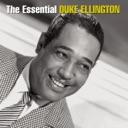Big Bands
King Oliver’s Creole Jazz Band in 1922
Pictorial Press Ltd/Alamy Stock PhotoKey Attributes of Big Bands
Select to filter timelineThemes
- Migration
- Travel
Musical Features
- Riffs
- Vocal Sounds
- Solo
- Ensemble
- Syncopation
- Vocals
- Instrumentals
- Ballad
Instruments
- Bass
- Drums
- Horn
- Other Percussion
- Saxophone
- Trombone
- Trumpet
- Voice
- Woodwinds
“He [Morton] had departed from notated ragtime conventions, he had integrated the jazz-blues scale into his music...; had composed rather than improvised, variations on melodies…”James DapognyJazz Musician and Historian
Big band ensembles usually consist of 14–16 musicians who play from scored arrangements that incorporate repeated riffs, call and response, improvised solos, and rhythmic breaks. These features distinguish big jazz bands of the 1920s from the collective polyphonic style of the typically seven-member New Orleans jazz ensemble. By the mid-1920s, big bands had begun to establish a performance style that combined syncopated eighth-notes with improvised melodies. This innovation later evolved into what became known as the swing style.
Context and History
“The very moment that Chicago fell to the lawless rule of the crime bosses, it gave birth to a golden age of musical creativity.”Alyn Shipton
When Southern musicians migrated to Northern cities, the jazz tradition experienced significant changes, evolving in new directions in Chicago, New York, and Kansas City, as well as out west to Los Angeles and San Francisco. Ferdinand “Jelly Roll” Morton was one of the pioneers in the development of this tradition. He was not only an extraordinary pianist and stylist, but also an important composer—one of the earliest and one of the first to present his compositions, with his Red Hot Peppers band, in the mid and late 1920s. Throughout his life, Morton traveled continually, performing throughout the United States.
“At that time [late 1920s] Louis Armstrong could have been elected Mayor of the South Side; he was loved. I can still see him being carried clear across the dance floor of that huge Savoy Ballroom by his cheering fans.”Art Hodesfrom Hot Man
Another New Orleans innovator, Joseph “King” Oliver, was the first New Orleans jazzman to make an indelible impact on the West Coast and in Chicago. Louis Armstrong followed in his footsteps, arriving in Chicago in 1922 to join Oliver’s combo. “King” Oliver created a style that featured all instruments playing the melody in harmony or in unison, alternating with an extended solo (for example, “Boogie Woogie,” 1930). Armstrong remained with Oliver until 1924, when he moved to New York City to join Fletcher Henderson’s new orchestra.
Henderson established this orchestra in 1924, including such innovators as Louis Armstrong, Coleman Hawkins, Don Redman, and later Roy Eldridge and Lester Young. Performing at the Roseland Ballroom in Times Square, Henderson became a major attraction in the city with “The Stampede” (1926).
An innovator throughout his long career, Duke Ellington, from Washington, DC, came to New York in 1923 and established his orchestra, “The Washingtonians.” He used blues and folk traditions in his swing arrangements, and he developed a new big band sound and swing style in the 1930s. His compositions included sounds never before heard in any jazz arrangements or compositions, such as “East St. Louis Toodle-Oo” (1926), “Black and Tan Fantasy” (1927), and “Creole Love Call” (1927).
“One couldn’t help but dance to that band [King Oliver’s Creole Jazz Band]. It was a dance band that liked to play anything. We had the sort of band that, when we played a number, we all put our hearts in it.”Baby DoddsDrummer
Jazz on Record
Researchers and fans place considerable emphasis on identifying the first jazz recordings. Recent research indicates that composer and multi-instrumentalist Wilbur Sweatman made the first jazz records (including “Down Home Rag”) in December 1916—before the Original Dixieland Jazz Band recorded. A popular vaudevillian, Sweatman mastered the art of playing three reed instruments simultaneously (long before Rahsaan Roland Kirk) and was a sensation on the stage in the early 20th century and into the jazz age.
Because of their willingness to record, the Original Dixieland Jazz Band (ODJB), made up of white musicians, established a jazz canon with their records in early 1917. They became known as the inventors of the music, which flourished in subsequent years throughout the United States and beyond, causing numerous musicians to form bands and play the standards recorded by the ODJB.
Big bands were not only instantly national, but international as well. Its introduction to France by James Reese Europe’s “Hellfighters” is well known, and jazz bands arrived in the Far East shortly thereafter. A band from the United States performed in Japan as early as 1920, and the written record indicates the new music was prevalent in the Philippines as well as Japan by the early 1920s, just before the King Oliver Creole Jazz Band recorded.
Musical Features/Performance Style
During the early jazz era, orchestras expanded from seven to 16 instrumentalists. Although, as bands increased in size, some larger ones were successful playing without written arrangements, it was more difficult to improvise adequate performances. This resulted in an increased use of written arrangements, unnecessary for smaller New Orleans ensembles.
Eventually, musicians had to adapt to reading and writing arrangements to have sufficient repertoire from which to choose. Some big bands employed “riffs,” or repeated phrases, as essential elements of their style. Different riffs were assigned to various instrumental sections of the orchestra and played against each other; for example, the brass section might carry on a musical dialogue with the reeds. These musical conversations between sections of the band allowed individuals within the group to have an increased backdrop for soloing.
In jazz, it is often difficult to distinguish between blues, popular, and jazz singers. Louis Armstrong, however, was seminal in defining a distinctive jazz vocal style by incorporating scat singing—an improvised technique in which wordless, sometimes nonsensical syllables substitute for an instrument—into his performances. “Heebie Jeebies” was one of the most famous songs that Armstrong popularized with his scat technique in the mid-1920s. Although Armstrong was not the first to actually record scat singing, a few jazz singers in the 1920s adopted his model, incorporating scat singing into their repertoire.
Lyrics
Jazz bands are primarily instrumental in orientation, but they slowly began to feature vocalists. Louis Armstrong, a trumpeter and singer, and “Jelly Roll” Morton, were amongst the first to perform popular songs of the day that were blues, ballads, novelty songs, and Broadway tunes. The lyrics are governed by these traditions.
Bibliography
- Armstrong, Louis. Louis Armstrong In His Own Words: Selected Writings. New York: Oxford University Press, 1999.
- Armstrong, Louis. Satchmo: My Life in New Orleans. New York: Da Capo Paperback, 1986 [1954].
- Gioia, Ted. The History of Jazz. New York: Oxford University Press, 1997.
- Lomax, Alan. Mister Jelly Roll: The Fortunes of Jelly Roll Morton, New Orleans Creole and "Inventor of Jazz" Berkeley: University of California Press, 2001 [1993].
- Shipton, Alyn. A New History of Jazz. New York: Continuum, 2001.










